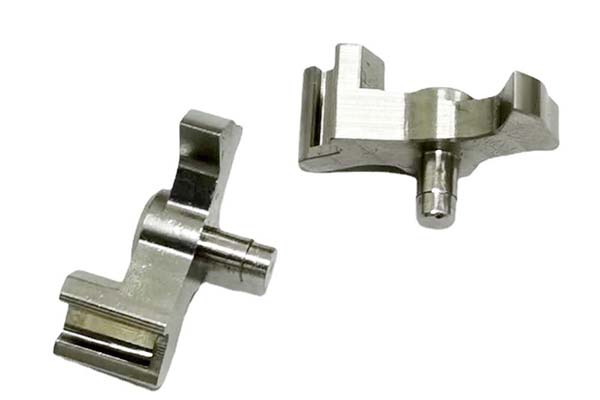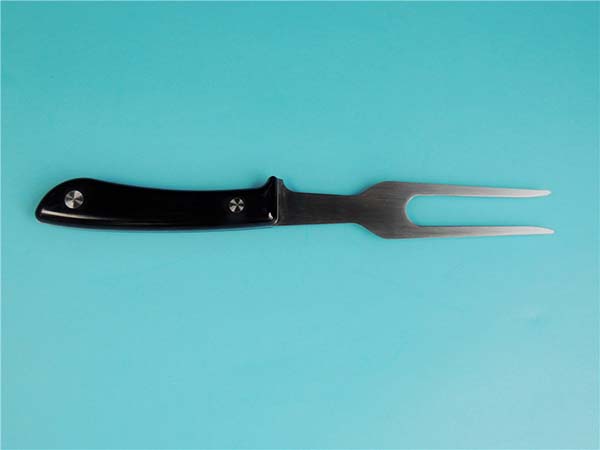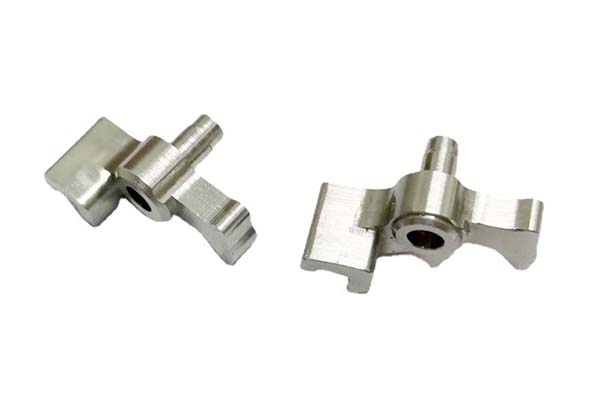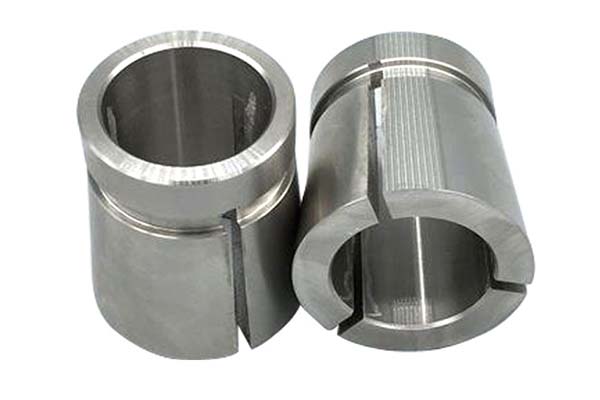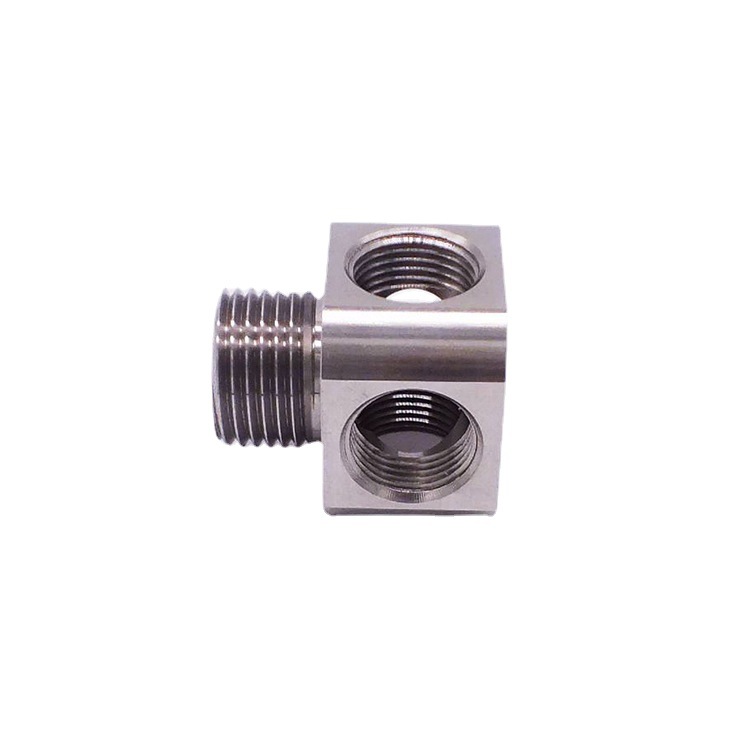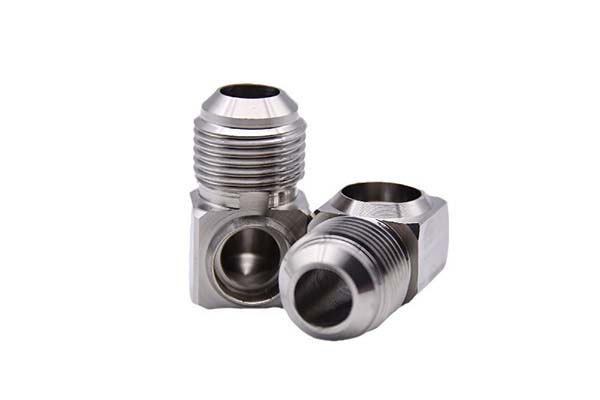Manufacturers working with stainless steel often face a unique set of challenges. The material’s exceptional strength and corrosion resistance come at the cost of increased machining difficulty—high work hardening rates, extreme cutting forces, and rapid tool wear can slow production and drive up costs. When it comes to CNC machining stainless steel, these challenges require specialized knowledge of material behavior, tool selection, and process optimization. This guide addresses these pain points, providing actionable strategies to achieve consistent results across all stages of production.
Material Overview of Stainless Steel
Stainless steel is a family of iron-based alloys containing at least 10.5% chromium, which forms a passive oxide layer that resists corrosion. Understanding the key characteristics of common grades is critical for successful machining:
Key Stainless Steel Categories and Grades
- Austenitic: The most widely used category, including 304 and 316 grades. These non-magnetic alloys offer excellent corrosion resistance and ductility but are prone to work hardening. 304 is cost-effective for general use, while 316 adds molybdenum for enhanced resistance to saltwater and chemicals.
- Ferritic: Magnetic alloys (e.g., 430) with lower chromium content (12-17%). They have good corrosion resistance but lower strength than austenitic grades, making them easier to machine.
- Martensitic: High-carbon, magnetic alloys (e.g., 420) that can be heat-treated for high strength. Used in applications requiring hardness, such as cutting tools.
- Duplex: Combines austenitic and ferritic structures (e.g., 2205), offering high strength and corrosion resistance—ideal for heavy-duty industrial use.
Critical Material Properties
- Mechanical properties: Tensile strengths range from 500 MPa (304) to 1200 MPa (heat-treated 420).
- Work hardening: Austenitic grades harden rapidly during machining, increasing cutting forces and tool wear.
- Chemical composition: Chromium (10.5-30%), nickel (0-22%), molybdenum (0-6%), and carbon (0.03-1.2%) determine performance characteristics.
- Magnetic properties: Austenitic grades are non-magnetic; ferritic and martensitic grades are magnetic.
CNC Machining Techniques for Stainless Steel
Core Machining Processes
CNC machining stainless steel relies on several key techniques, each requiring specific parameter optimization:
- CNC milling: Used for complex shapes and contours. Climb milling is preferred over conventional milling to reduce work hardening.
- CNC turning: Ideal for cylindrical parts. High rigidity is critical to counteract high cutting forces.
- CNC drilling and CNC boring: Require sharp tools and proper coolant delivery to prevent work hardening at the cutting edge.
- Machining centers: Multi-axis machines improve efficiency for complex parts, reducing setup times and improving accuracy.
Optimal Cutting Parameters
| Operation | Cutting Speed (m/min) | Feed Rate (mm/rev) | Depth of Cut (mm) |
| CNC milling (carbide) | 100-200 | 0.1-0.25 | 1-5 |
| CNC turning (carbide) | 150-300 | 0.15-0.3 | 2-6 |
| CNC drilling (carbide) | 80-150 | 0.1-0.2 | 1-3 |
These parameters vary by grade: 304 and 316 require lower speeds and higher feeds than ferritic grades to minimize work hardening, while martensitic grades (e.g., 420) need slower feeds due to higher hardness.
Tool Selection and Tooling for Stainless Steel
Choosing the Right Cutting Tools
Tool selection is the single most critical factor in CNC machining stainless steel. The wrong tools can lead to excessive wear, poor surface finish, and increased costs:
- Cutting tools: Carbide tools are preferred over high-speed steel (HSS) due to their superior heat resistance. For high-volume production, ceramic or polycrystalline diamond (PCD) tools offer longer life but higher upfront costs.
- Tool coatings: TiAlN and AlTiN coatings reduce friction and extend tool life by 30-50% compared to uncoated carbide. TiN coatings work well for lower-speed applications.
- Tool geometry: Positive rake angles (5-10°) reduce cutting forces, while larger relief angles prevent rubbing against work-hardened material. Round inserts are more durable than square inserts for heavy cuts.
- Tool holders: Rigid, shrink-fit holders minimize tool deflection, which is critical for maintaining dimensional accuracy.
Maximizing Tool Life
- Use through-tool coolant systems to deliver high-pressure coolant (70-100 bar) directly to the cutting zone, reducing heat and flushing chips.
- Inspect tools regularly for wear—replace inserts when flank wear reaches 0.3-0.5 mm to prevent poor surface finish.
- Avoid excessive tool overhang, which increases deflection and vibration.
Surface Finish and Quality Control
Achieving Desired Surface Characteristics
Surface finish is critical for stainless steel parts, especially in applications where corrosion resistance or hygiene matters:
- Surface roughness: Achievable Ra values range from 0.8 μm (polished finishes) to 6.3 μm (rough machining). 304 and 316 can achieve smoother finishes than martensitic grades due to their ductility.
- Surface finish requirements: Food processing equipment often requires Ra ≤ 0.8 μm to prevent bacterial growth, while industrial machinery may accept Ra ≤ 3.2 μm.
- Finishing processes: Grinding and polishing improve surface smoothness, while electrochemical finishing can achieve mirror-like finishes (Ra ≤ 0.02 μm) for critical applications.
Quality Control Measures
- Inspection methods: Coordinate Measuring Machines (CMM) verify dimensional accuracy, while profilometers measure surface roughness (Ra, Rz).
- Quality control standards: Compliance with ISO 9001 and ASTM A276 (for stainless steel bars) ensures consistent quality.
- Surface defects to watch for: Built-up edge (BUE) on tools can cause tearing, while insufficient coolant leads to discoloration—both compromise corrosion resistance.
Heat Treatment and Post-Machining Processes
Critical Post-Processing Steps
Stainless steel parts often require post-machining treatments to enhance performance or meet application requirements:
- Heat treatment processes: Stress relief annealing (250-400°C for 1-2 hours) reduces residual stresses in machined parts, preventing distortion. Martensitic grades like 420 can be hardened to 50-55 HRC through quenching and tempering.
- Passivation: A chemical treatment (typically with nitric acid) that enhances the passive oxide layer, improving corrosion resistance by 20-30%.
- Electropolishing: Removes a thin layer of material to achieve a smooth, bright finish while improving corrosion resistance.
- Post-machining cleaning: Ultrasonic cleaning removes coolant residues and chips, which can cause pitting if left on the surface.
Applications of Stainless Steel Machined Parts
Stainless steel’s unique combination of strength, corrosion resistance, and hygiene makes it indispensable across industries:
- Medical devices: Surgical instruments (440C) and implantable parts (316L) benefit from biocompatibility and sterility.
- Food processing equipment: Mixers, conveyors, and tanks (304 and 316) resist corrosion from acids and cleaning agents.
- Chemical processing: Valves, pumps, and reactors (316 and duplex grades) withstand harsh chemicals.
- Aerospace components: Fasteners and structural parts (321) resist high-temperature corrosion.
- Marine applications: Propellers and fittings (316) withstand saltwater exposure.
In the food industry, for example, stainless steel parts reduce contamination risks by 90% compared to plastic or aluminum alternatives.
Technical Specifications and Standards
Adhering to industry standards ensures stainless steel parts meet performance and safety requirements:
- ASTM standards: ASTM A240 (sheet/plate), ASTM A276 (bars), and ASTM A484 (general requirements) define material properties.
- ISO standards: ISO 15510 specifies chemical composition and mechanical properties for stainless steel grades.
- Machining tolerances: Achievable tolerances range from ±0.01 mm (precision parts) to ±0.1 mm (general purpose), depending on grade and part size.
- Dimensional accuracy: Critical for sealing surfaces in hydraulic components, verified using CMM with accuracy up to ±0.001 mm.
Cost and Efficiency Considerations
Balancing Performance and Cost
CNC machining stainless steel is generally more expensive than machining aluminum or carbon steel, but strategic choices can optimize efficiency:
- Machining cost: 20-30% higher than aluminum due to slower cutting speeds and increased tool wear. 304 is 10-15% cheaper to machine than 316 due to lower work hardening.
- Tool cost: Carbide tools cost 2-3 times more than HSS but last 5-10 times longer, reducing overall costs.
- Production rate: Typical production rates range from 10-20 parts per hour for complex 316 parts, compared to 20-30 parts per hour for aluminum.
- Efficiency improvements: High-pressure coolant systems reduce cycle times by 15-20% by improving chip evacuation and reducing tool wear.
Comparison with Other Materials
How does stainless steel compare to other common machining materials?
| Material | Corrosion Resistance | Strength (Tensile) | Machining Cost (Relative) | Weight (g/cm³) |
| Stainless Steel 304 | Excellent | 500 MPa | High | 7.93 |
| Stainless Steel 316 | Superior | 520 MPa | Very High | 8.03 |
| Aluminum 6061 | Good | 310 MPa | Low | 2.70 |
| Carbon Steel 1018 | Poor | 440 MPa | Medium | 7.85 |
| Titanium Ti-6Al-4V | Superior | 900 MPa | Very High | 4.43 |
- Stainless steel vs. aluminum: Stainless steel offers 60-70% higher strength and superior corrosion resistance but is 3x heavier and more expensive to machine.
- Stainless steel vs. carbon steel: Stainless steel provides far better corrosion resistance but is harder to machine and 20-30% more expensive.
- Stainless steel vs. titanium: Titanium offers better strength-to-weight ratio but costs 3-5x more, making stainless steel a cost-effective alternative for many applications.
Yigu Technology’s Perspective
At Yigu Technology, we specialize in CNC machining stainless steel for medical, food, and industrial clients. Our experience shows that using AlTiN-coated carbide tools with high-pressure coolant (100 bar) reduces tool wear by 40% when machining 316. For precision parts requiring tight tolerances, we recommend slower feed rates (0.1-0.15 mm/rev) and rigid machine setups to minimize deflection. Our quality control process includes 100% CMM inspection and passivation testing, ensuring parts meet the strictest standards for corrosion resistance and dimensional accuracy.
FAQ
- Which stainless steel grade is easiest to machine?
Ferritic grades like 430 are the easiest to machine due to lower work hardening rates, followed by austenitic 304. Martensitic grades like 420 are the most challenging due to high hardness.
- How can work hardening be minimized during machining?
Use sharp tools, high feed rates, and minimal depth of cut to reduce contact time between the tool and workpiece. Climb milling also helps by reducing rubbing against the material.
- What is the best way to improve corrosion resistance after machining?
Passivation is critical—it removes free iron from the surface, allowing the chromium oxide layer to reform. For high-performance applications, electropolishing further enhances corrosion resistance by creating a smoother surface.
